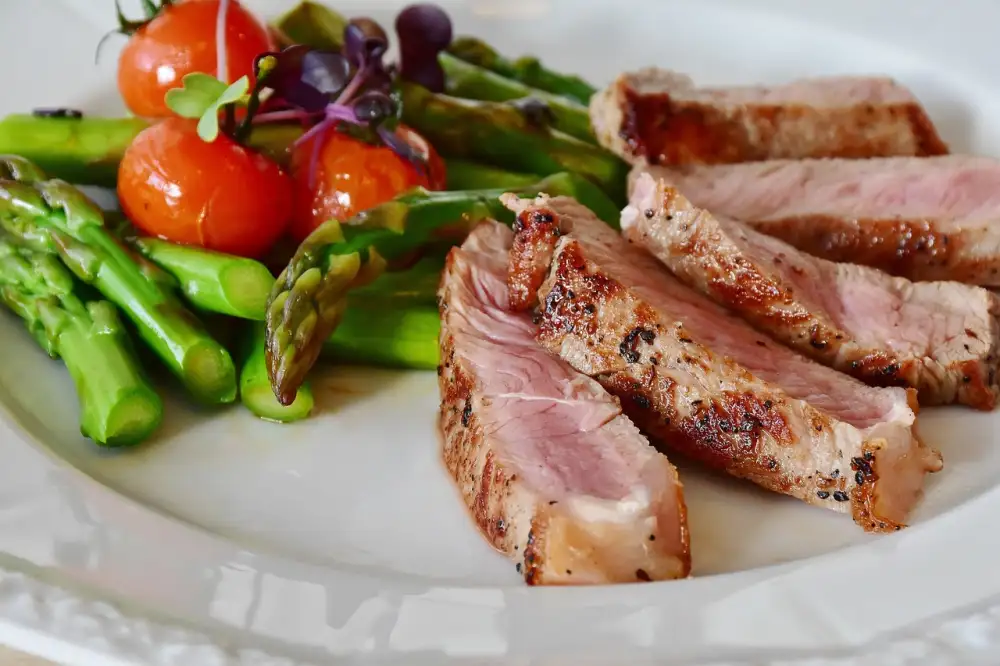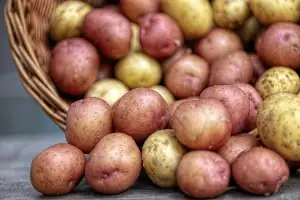The Ultimate Guide: Discover the Best Cuts of Meat for Perfect Pot Roast!

- Importance of Choosing the Right Meat
- Factors to Consider When Selecting Meat for Pot Roast
- Marbling and Fat Content
- Tender Cuts vs. Tough Cuts
- Flavor and Texture
- Top Cuts of Meat for Perfect Pot Roast
- Chuck Roast
- Brisket
- Rump Roast
- Bottom Round Roast
- Cooking Tips for Pot Roast
- Slow Cooking Methods
- Seasoning and Marinades
- Resting and Carving
Pot roast is a classic and comforting dish that has been enjoyed by families for generations. It is a slow-cooked meal that transforms tough cuts of meat into tender, flavorful perfection. The process involves braising the meat in a flavorful liquid, such as broth or wine, until it becomes melt-in-your-mouth delicious. Pot roast is not only delicious, but it is also versatile, as it can be customized with different herbs, spices, and vegetables to suit your taste. Whether you are hosting a dinner party or simply craving a hearty meal on a chilly evening, pot roast is sure to satisfy your cravings and leave you feeling warm and satisfied. So let's dive into the world of pot roast and discover the best cuts of meat to achieve the perfect dish!
Importance of Choosing the Right Meat
Choosing the right meat is crucial when it comes to making a perfect pot roast. The quality and type of meat used can greatly impact the flavor, tenderness, and overall success of the dish. Opting for high-quality meat ensures a more delicious and satisfying pot roast experience. Additionally, selecting the appropriate cut of meat allows for optimal cooking methods and results in a tender and juicy final product. So, take your time when choosing the meat for your pot roast, as it is an essential step towards achieving culinary perfection.
Factors to Consider When Selecting Meat for Pot Roast
When it comes to selecting the perfect meat for pot roast, there are a few important factors to consider. First and foremost is the marbling and fat content of the meat. Marbling refers to the small streaks of fat that are distributed throughout the muscle fibers. This fat adds flavor and helps keep the meat moist during cooking.
Another factor to consider is whether you prefer tender cuts or tough cuts of meat for your pot roast. Tender cuts like ribeye or tenderloin will result in a more melt-in-your-mouth texture, but they may not hold up as well during long cooking times. Tougher cuts like chuck or brisket have more connective tissue, which breaks down during slow cooking, resulting in a tender and flavorful pot roast.
Flavor and texture are also important considerations when selecting meat for pot roast. Some cuts, like chuck roast, have a rich beefy flavor that pairs well with hearty vegetables and robust seasonings. Other cuts, like rump roast or bottom round roast, have a leaner texture and milder flavor that can be enhanced with marinades or spice rubs.
By considering these factors - marbling and fat content, tenderness vs toughness, and flavor and texture - you can choose the best cut of meat for your pot roast based on your personal preferences.
Marbling and Fat Content
When it comes to selecting the perfect meat for pot roast, one of the most important factors to consider is marbling and fat content. Marbling refers to the small streaks of fat that are dispersed throughout the muscle tissue. This intramuscular fat not only adds flavor but also helps keep the meat moist and tender during cooking. Look for cuts with a good amount of marbling as this will contribute to a juicy and flavorful pot roast. Additionally, a moderate amount of external fat on the cut can also enhance both the taste and texture of the final dish.
Tender Cuts vs. Tough Cuts
When it comes to selecting the right meat for pot roast, understanding the difference between tender cuts and tough cuts is crucial. Tender cuts of meat come from muscles that are used less frequently by the animal, resulting in a more tender texture. These cuts are typically more expensive and cook faster. On the other hand, tough cuts come from muscles that are used more often, resulting in a tougher texture. However, with slow cooking methods like braising or stewing, these tough cuts can become incredibly tender and flavorful. So don't shy away from using tougher cuts like chuck roast or brisket for your pot roast – they will transform into melt-in-your-mouth perfection when cooked low and slow!
Flavor and Texture
When it comes to pot roast, flavor and texture are key factors to consider when selecting the right cut of meat. The flavor of the meat will greatly impact the overall taste of your dish, so it's important to choose a cut that is rich and flavorful. Additionally, the texture of the meat will determine how tender and juicy your pot roast turns out.
For a pot roast with intense flavor, opt for cuts that have a good amount of marbling. Marbling refers to the small streaks of fat within the muscle fibers. This fat adds moisture and richness to the meat, resulting in a more succulent pot roast. Look for cuts with visible marbling throughout, such as chuck roast or brisket.
In terms of texture, some cuts are naturally more tender than others. Tender cuts like ribeye or tenderloin may be delicious on their own but can become too soft and lose their structure when cooked for long periods in a pot roast. Instead, opt for tougher cuts like chuck roast or rump roast. These cuts have more connective tissue which breaks down during cooking, resulting in a melt-in-your-mouth texture.
The flavor and texture of the meat can also be enhanced by proper seasoning and cooking techniques. Consider using marinades or dry rubs to infuse additional flavors into the meat before cooking. Slow cooking methods such as braising or using a slow cooker will help break down tough fibers and result in a tender pot roast.
By taking into account both flavor and texture when selecting your meat for pot roast, you can ensure that your dish is not only delicious but also has the perfect balance of tenderness and juiciness.
Top Cuts of Meat for Perfect Pot Roast
a. Chuck Roast: Known for its rich flavor and tender texture, chuck roast is a popular choice for pot roast. It comes from the shoulder area of the cow and contains a good amount of marbling, which adds flavor and juiciness to the meat.
b. Brisket: This cut comes from the breast or lower chest area of the cow. It is well-known for its intense beefy flavor and is often used in barbecue recipes. When cooked low and slow, brisket becomes incredibly tender and melts in your mouth.
c. Rump Roast: Cut from the hindquarters of the cow, rump roast is leaner compared to other cuts but still delivers great flavor. It has a firm texture that holds up well during long cooking times, making it an excellent choice for pot roast.
d. Bottom Round Roast: Also known as round tip roast, this cut comes from the rear leg of the cow. It is lean and relatively tough but can be transformed into a succulent pot roast when cooked slowly with moist heat. The bottom round roast offers a mild beefy flavor that pairs well with various seasonings.
When selecting meat for your pot roast, consider these top cuts to ensure a delicious and satisfying meal.
Chuck Roast
Chuck Roast is the go-to cut for a perfect pot roast. It comes from the shoulder area of the cow, which means it has a good amount of marbling and fat content. This marbling not only adds flavor but also keeps the meat moist during the long cooking process. The chuck roast is known for its rich, beefy flavor and tender texture when cooked low and slow. Its well-developed muscles make it ideal for braising or slow roasting, allowing the connective tissues to break down and create a melt-in-your-mouth experience. Whether you're cooking it in the oven or using a slow cooker, the chuck roast will result in a deliciously tender and flavorful pot roast that will have everyone asking for seconds.
Brisket
Brisket is a popular choice for pot roast due to its rich flavor and tender texture. This cut comes from the chest area of the cow and is known for its marbling, which adds moisture and flavor during cooking. The key to a perfect brisket pot roast is slow cooking, allowing the tough connective tissues to break down and become melt-in-your-mouth tender. Whether you braise it in the oven or cook it in a slow cooker, brisket will reward you with juicy, flavorful meat that is sure to impress your guests.
Rump Roast
Rump roast is another excellent choice for a perfect pot roast. It comes from the hindquarters of the cow and is known for its rich flavor and tenderness. This cut has a good amount of marbling, which adds juiciness and flavor to the meat during cooking. Rump roast is also relatively lean, making it a healthier option for those watching their fat intake. When cooked slowly, this cut becomes incredibly tender and moist, making it ideal for pot roast recipes. Its firm texture holds up well during long cooking times, allowing the flavors to meld together beautifully. Whether you braise it or cook it in a slow cooker, rump roast will result in a mouthwatering pot roast that will impress your family and guests alike.
Bottom Round Roast
Bottom Round Roast is another excellent choice for a perfect pot roast. This cut comes from the hindquarters of the cow, making it lean and flavorful. While it may not be as tender as other cuts, it can still yield delicious results when cooked properly.
To make the most of a bottom round roast, it's important to cook it slowly and at a low temperature. This will help break down the tough fibers and result in a tender and juicy roast. Braising or slow cooking methods such as roasting or using a slow cooker are ideal for this cut.
When seasoning a bottom round roast, opt for bold flavors to enhance its taste. A combination of herbs like rosemary, thyme, and garlic works well with this cut. Additionally, marinating the meat overnight can further enhance its tenderness and flavor.
After cooking, let the bottom round roast rest for a few minutes before carving. This allows the juices to redistribute throughout the meat, resulting in a more succulent and flavorful dish.
In conclusion, choosing the right cut of meat is crucial for achieving the perfect pot roast. Bottom round roast offers great flavor when cooked slowly and with proper seasoning. By following these tips, you can elevate your pot roast game and impress your guests with a mouthwatering meal.
Cooking Tips for Pot Roast
a. Slow Cooking Methods: Pot roast is best cooked using slow cooking methods such as braising or slow roasting. This allows the meat to become tender and juicy. Use a slow cooker or Dutch oven for optimal results.
b. Seasoning and Marinades: To enhance the flavor of your pot roast, season it generously with salt, pepper, and your favorite herbs and spices. You can also marinate the meat overnight in a mixture of wine, broth, and aromatics for added depth of flavor.
c. Resting and Carving: After cooking, let the pot roast rest for at least 10-15 minutes before carving. This allows the juices to redistribute throughout the meat, resulting in a more flavorful and moist roast. Slice against the grain for maximum tenderness.
Remember, these cooking tips combined with choosing the right cut of meat will ensure that your pot roast turns out perfectly delicious every time!
Slow Cooking Methods
When it comes to pot roast, slow cooking is the key to achieving tender and flavorful meat. There are several methods you can use to achieve the perfect pot roast.
One popular method is braising, which involves searing the meat on all sides in a hot pan before transferring it to a Dutch oven or slow cooker. The meat is then cooked slowly in liquid, such as beef broth or red wine, until it becomes fork-tender.
Another option is using a slow cooker or crockpot. This method allows you to set it and forget it, as the meat cooks low and slow over several hours. The result is juicy and tender meat that falls apart with each bite.
If you prefer a more hands-on approach, you can also cook your pot roast in the oven. This method involves placing the seasoned meat in a covered roasting pan and cooking it at a low temperature for several hours. The gentle heat helps break down the tough connective tissues, resulting in melt-in-your-mouth goodness.
No matter which method you choose, be sure to allow enough time for the meat to cook slowly. Patience is key when it comes to achieving that perfect pot roast texture.
Remember, slow cooking allows the flavors to develop and intensify while ensuring that the meat becomes tender and juicy. So take your time, let your pot roast simmer away on low heat, and get ready for a truly delicious meal!
Seasoning and Marinades
When it comes to seasoning and marinades, pot roast offers endless possibilities for enhancing its flavor. Before cooking, consider marinating the meat overnight to infuse it with delicious flavors. A simple marinade can consist of ingredients like soy sauce, Worcestershire sauce, garlic, herbs, and spices. These ingredients not only add depth to the meat but also help tenderize it. Additionally, don't forget to season the roast generously with salt and pepper before searing or slow cooking. This will ensure that every bite is packed with savory goodness.
Resting and Carving
Resting and Carving: Once your pot roast is cooked to perfection, it's important to let it rest before carving. This allows the juices to redistribute throughout the meat, resulting in a more tender and flavorful roast.
To rest the meat, transfer it from the cooking vessel to a cutting board and cover it loosely with aluminum foil. Let it rest for about 15-20 minutes before carving. This resting period also gives you time to prepare any accompanying side dishes.
When it comes to carving, use a sharp knife and slice against the grain for maximum tenderness. For larger cuts like brisket or chuck roast, you can slice them into thick slices or shred them using two forks.
Remember, pot roast is all about comfort and indulgence. So take your time, savor each bite, and enjoy the delicious flavors that come from choosing the best cuts of meat for your perfect pot roast!
Choosing the right cut of meat is crucial when it comes to preparing a perfect pot roast. By selecting cuts that are well-marbled, tender, and flavorful, you can take your pot roast to new heights of deliciousness.
The top cuts of meat for pot roast include chuck roast, brisket, rump roast, and bottom round roast. These cuts offer a balance of marbling and fat content, ensuring a moist and succulent pot roast. They also have the right amount of connective tissue that breaks down during slow cooking methods, resulting in tender and melt-in-your-mouth meat.
To further enhance the flavors of your pot roast, consider using seasoning rubs or marinades. This will infuse the meat with additional layers of taste and aroma. Slow cooking methods such as braising or using a slow cooker will help to develop rich flavors and ensure that the meat is tender.
Once your pot roast is cooked to perfection, allow it to rest before carving. This allows the juices to redistribute throughout the meat, resulting in a more flavorful and moist final product.
In conclusion, choosing the best cut of meat for your pot roast is essential for achieving a truly exceptional dish. By considering factors such as marbling, tenderness, flavor, and texture, you can elevate your pot roast to culinary greatness. So go ahead and explore these top cuts of meat for your next pot roast adventure!
Published: 25. 11. 2023
Category: Food



